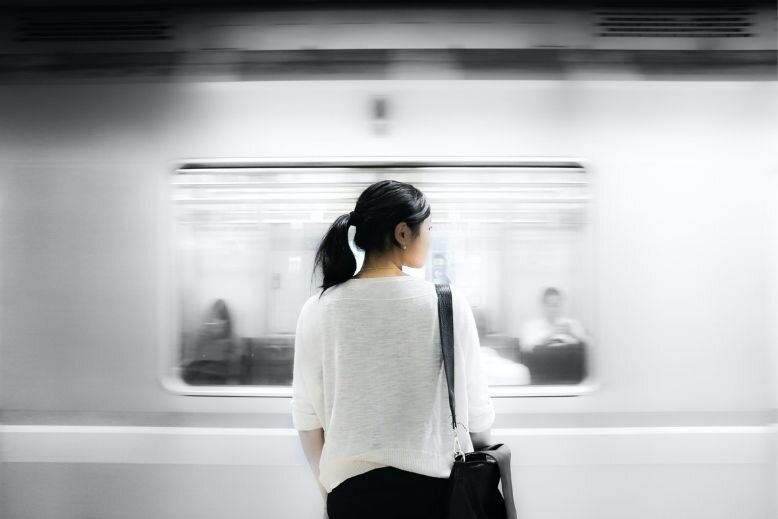Have you ever wondered what it’s like to be clueless with what’s going on in your body? When we think of illnesses, we often think of those that typically come with symptoms such as fevers, coughs, colds, body pain and the like. In some cases, these common symptoms are signs that something is far more serious but are brushed off until they can’t be ignored anymore. However, some conditions don’t manifest any symptoms at all until one day, you’re sitting in front of a doctor and being told that you have an unseen illness that will change your life.
Such was the case for Sheryl Chan and Isabelle Rosta, two women who have been dealing with unpopular yet not uncommon conditions for the past few years. Here’s what they have to share about living with an unusual illness.
Your body is your own enemy

What is it like living with an unusual illness? (Photo from: averie woodard via Unsplash)
“I was 14 years old, and it was after physical training at school under the hot sun. [I felt] half of my body — from the skull to the tip of my toe — become numb,” Sheryl recalled. “I thought it was just a heat stroke, so a friend accompanied me as I limped to the nearest clinic. We were still laughing along the way.”
She was then referred to a neurologist and after some bloodwork, the results were clear: Sheryl had just suffered a mild stroke at the tender age of 14. “I went silent; I mean, how do you process that at 14? It’s a life-changing diagnosis.”
Sheryl has Antiphospholipid Syndrome, a rare blood clotting condition where her body produces antibodies that interfere with the normal blood clotting functions.
She also has other chronic illnesses such as lupus, Sjögren’s syndrome, and epilepsy.
Isabelle, on the other hand, has a condition called endometriosis. It’s a painful condition that affects 10 per cent of women worldwide. The uterine tissue grows outside of the uterus and impacts the ovaries, fallopian tubes, and pelvic tissue which causes extremely painful periods and pelvic pain.
“I was admitted to the hospital when I fainted at work after I had an excruciatingly painful menstrual cramp. I was confused when I was first diagnosed and didn't understand why or what caused it,” she recalled. “I was also told that I may not be able to conceive naturally and it broke my heart.”
Life-changing shifts
Since getting their respective diagnoses, both Sheryl and Isabella have had to make serious adjustments in their lifestyles.
“I have to go on blood-thinning medications for the rest of my life, and certain foods have to be avoided or calibrated so as not to antagonise its effects,” Sheryl shared. Aside from that, she was also told to quit playing contact sports because it puts her at risk of clotting or bleeding — a statement that shook her to the core. “Team sports was something I played every single week, so that was a huge blow. I cried when he told me that, and he said, ‘Is that it?’ Of course, it’s a big deal to a 14-year-old!”
Isabelle also had to make some dietary changes, aside from being more aware of her health. “I avoided food that made my cramps worse like soya drinks.” She also shared that she was prescribed painkillers to help with the pain but it came to a point where the painkillers stopped working on her.

Sheryl shared that some days she’s just too exhausted to even get out of bed in the morning. Isabelle experienced fainting spells from the severely painful menstrual cramps caused by endometriosis that made her call out of work. (Photo from: Yuris Alhumaydy via Unsplash)
As an adult in her thirties, Sheryl has to deal with adapting her day to how her body feels, which is hard because it’s always unpredictable. “Every single day I wake up without knowing how I’m going to feel, or how much energy I have to complete the tasks set out before me. Sometimes that even varies by the hour.” On the days when the brain fog gets too much, she’s “forced to just rest for the entire day” and ends up “feeling guilty about all the things [she] left undone.”
Another big issue is the finances involved in living with an unusual illness. “The support from the government in a lot of places around the world just isn’t enough. Chronic illness costs go beyond doctor fees and medications, which can already cost thousands of dollars a month,” she explained and wrote on her blog. “There are other things we need to buy such as better food, pain management tools and mobility aids, to even have any semblance of quality of life.”
A constant struggle
Living with an unusual illness doesn’t just change your personal lifestyle. It also has an impact on how you’re viewed as an individual.

Some things we take for granted are things Sheryl has to consider before even getting out of bed. (Photo from: Eutah Mizushima via Unsplash)

Isabelle learned to block out the comments about her condition coming from other people. (Photo from: Hayes Potter via Unsplash)
Widening the conversation
Unusual illnesses are not uncommon, yet information about these conditions are still scarce. “It’s underfunded in terms of research and support, poorly understood and highly stigmatised,” Sheryl summarised about the current climate surrounding chronic illnesses.
Isabelle also wishes that both women and men should be aware of the true cause of endometriosis: “It isn't caused by ‘bad diet’ or that it can simply go away with any remedy, medication or surgery.” Also, she pointed out that in vitro fertilisation (IVF) and other methods are available for women who have endometriosis but still want to have a baby.
Sheryl agrees, adding that “As with anything that’s not fully understood, there is always stigma. This impacts young adults more, I think, because they are ‘not supposed’ to be so sick. I’ve had strangers discount my chronic illnesses and claim that I’m lying, simply due to that fact alone,” she shared. Sheryl has also opened a platform for people with chronic conditions to share their experiences through her blog called A Chronic Voice.
It truly helps people with unusual illnesses to have a good support system. “I have a very supportive husband who has seen me through some of the worst episodes,” Isabelle said. “It's been 11 years since I was diagnosed and I have grown to love my body, to not allow negative remarks affect me and I'm able to educate and own it now.”
In the same vein, Sheryl has several hopes for the future for chronic illness discourse. “I would like to see more open communication where the chronically ill and healthy people are unafraid to ask each other questions and to try and understand each other better. Even better, I would like to see action more than discussion. More funding, more work and life support, more accessibility within society.”
She leaves us with this to consider: “Accessibility benefits everyone, not just the disabled. Also, nurturing empathy can only result in a better society.”
Comments, questions or feedback? Email us at [email protected].








